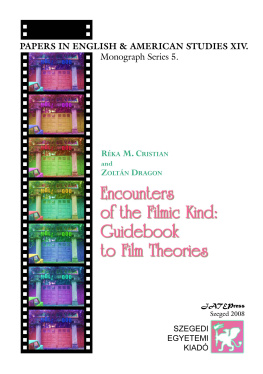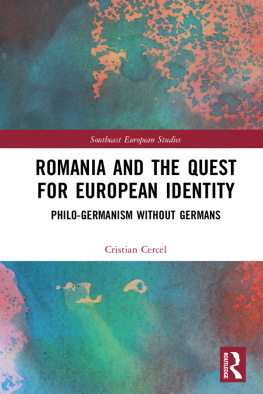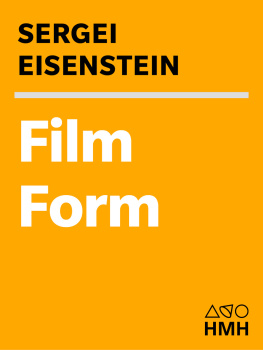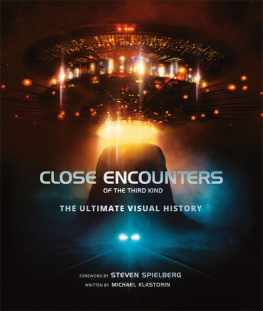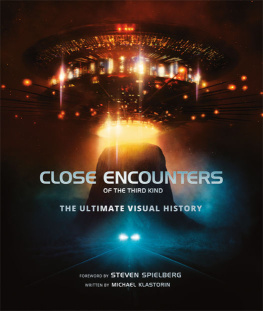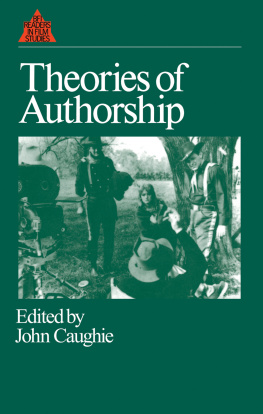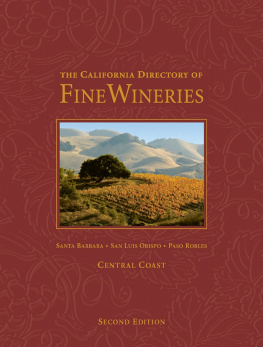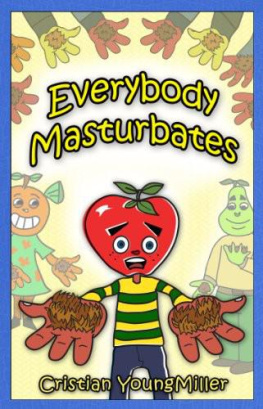Réka M. Cristian - Encounters of the filmic kind: guidebook to film theories
Here you can read online Réka M. Cristian - Encounters of the filmic kind: guidebook to film theories full text of the book (entire story) in english for free. Download pdf and epub, get meaning, cover and reviews about this ebook. year: 2008, publisher: JATEPress, genre: Non-fiction. Description of the work, (preface) as well as reviews are available. Best literature library LitArk.com created for fans of good reading and offers a wide selection of genres:
Romance novel
Science fiction
Adventure
Detective
Science
History
Home and family
Prose
Art
Politics
Computer
Non-fiction
Religion
Business
Children
Humor
Choose a favorite category and find really read worthwhile books. Enjoy immersion in the world of imagination, feel the emotions of the characters or learn something new for yourself, make an fascinating discovery.
- Book:Encounters of the filmic kind: guidebook to film theories
- Author:
- Publisher:JATEPress
- Genre:
- Year:2008
- Rating:3 / 5
- Favourites:Add to favourites
- Your mark:
- 60
- 1
- 2
- 3
- 4
- 5
Encounters of the filmic kind: guidebook to film theories: summary, description and annotation
We offer to read an annotation, description, summary or preface (depends on what the author of the book "Encounters of the filmic kind: guidebook to film theories" wrote himself). If you haven't found the necessary information about the book — write in the comments, we will try to find it.
Encounters of the filmic kind: guidebook to film theories — read online for free the complete book (whole text) full work
Below is the text of the book, divided by pages. System saving the place of the last page read, allows you to conveniently read the book "Encounters of the filmic kind: guidebook to film theories" online for free, without having to search again every time where you left off. Put a bookmark, and you can go to the page where you finished reading at any time.
Font size:
Interval:
Bookmark:

Encounters of the Filmic Kind:
Guidebook to Film Theories
Rka M. Cristian and Zoltn Dragon
Acknowledgments
The publication of Encounters has been aided by the Faculty of Arts, University of Szeged. We would also like to thank Blint Rozsnyai, the Head of the Department of American Studies, who has encouraged us to write this book right from the birth of the project. Thanks also to the 2002 Fulbright American Studies International Reading American program, organized at New School for Social Research, New York, by Elzbieta Matynia that provided fruitful harvest of materials for film studies and a constructive forum for plural critical views. Special thanks to Jonathan Veitch, the Dean of Eugene Lang College The New School for Liberal Arts, for his generous professional advice and continuous collegial support in the film studies curriculum development, as a result of which popular courses in film studies have been improved and new ones implanted at the Institute of English and American Studies in Szeged. Parveen Adams has been a genuine source of inspiration for topics in psychoanalytic film theory and criticism.
Special thanks to Etelka Sznyi, a great editor, who has made it a real pleasure to publish with JATEPress, to Lvia Szlpl for her thoughtful responses and detailed criticism on early drafts of the manuscript, to Nra Borthaiser, who read the text with the eyes of our target audience, and to Annamria Barnczki, a great, true friend, who intellectually sustained chunks of the project. But far and outmost, our deepest gratitude goes to our families for their invaluable and unconditioned support throughout the entire book project.
To our students
Introduction
New modes of theorizing are necessary. We must start again.
(Nol Carroll)
The idea for Encounters of the Filmic Kind was born of teaching experience. It was apparent from the onset of this book project that there was a real need for an easily comprehensible guidebook for students covering the most influential theoretical grids in the history of film theories. We agreed to write this book in order to make it an authentic guide for those who want to be more than just superficially initiated into the terrain of film theories. What we did not want: yet another dense text that would give a hard time for BA students. We had to remember how we read theoretical texts back in our early student years and decided to draft our chapters accordingly, in order to put together a manual that would not ultimately find its place in one of the corners of a (perhaps, dorms) roomhaving been ripped of pages containing information served in an irritating manner. Similar to the combined use of computer technology and music in the communication with aliens in Steven Spielbergs Close Encounters of the Third Kind (1977) we assembled sometimes difficult texts with a number of interpretations in order to make them easily understandable. Most of all, this guidebook is intended to drive people back to consciously watch (more) movies and not to take away the pleasure of watching, talking, and, especially, writing about films.
This text is meant primarily for BA students majoring in English and American Studies with interest in film issues, and intended also to all of those intrigued by the ways in which films can make sense. The subjects and the material of this guide were chosen on the basis of personal experienceseminars and lectureswith BA students struggling to understand classical and contemporary theoretical texts about cinema.
Encounters of the FilmicKind is conceived as a text contextualizing and enhancing further thought. It is not intended to shape a new theory of film or to build a unifying theory of the cinema; it is rather a summary of theories about film with mostly English and American examples and relevance. The result of a practical encounter with the celluloid world, this work is intended to function as an introductory, pragmatic guide to cinema.
To paraphrase Andrew Sarriss statement on auteur theory, this book reflects an attitude towards movies rather than a rigorous method of studying the wider discipline of film studies. Therefore, the content of this work is less essentialist and more context-based. We follow an interdisciplinary mode of discussion; there is no dominant, overarching theory but plural, sometimes transgressive modes of seeing films, channeled into a book divided into eight chapters.
The first chapter, Encounters of the First Kind: Once Upon a Time in Film, outlines the most significant historical and scientific origins of film and contexualizes these in the realm of appropriate film theories. It focuses on the difference between the cinema and film, analyses a few proto-cinematic forms, and follows special episodes in the development of film; discusses the realistic and the formative approaches to movies, sketches the historical and economic backgrounds that contributed to the appearance of movie-theaters, and shows some technological innovations that stand at the origin of certain genres; talks about theoretical concepts behind the myth of total cinema and the essence of cinema, goes into relevant details concerning color and sound in film, and deals with the beginnings of film theory in the English-speaking world. At the end of the chapter readers can find a selected list of recommended online glossaries for film/cinema terms.
The second chapter, Do You Speak Film?: Film Language and Adaptation, looks at the ways film has been defined as language, and examines the implications of such a claim in various contexts, from the issue of narrativity to that of adaptation. The issue of film language is discussed through the concepts of film narratology (narrative, the types of narrator, focalizer, grand imagier, and diegesis) and investigated through the special case of textual transformation known as adaptation.
The chapter Dream On: Psychoanalysis and the Cinema, provides an overview of different orientations in psychoanalytically informed film theories. The issues of identification, the Oedipal trajectory, castration, fetishism, cinematic subjectivity, the difference between the gaze and look, and the procedure of suture are discussed in detail. As psychoanalytic film theory largely relies on Lacanian ideas and theoretical concepts, the chapter focuses on concepts that have been rethought by recent new Lacanian theorists in order to show the relevance of psychoanalytic thought in film theory and criticism after the heyday of the approach in the 1970s.
Chapter four, Cowboys, Deadly Women and Co.: Genres of the Cinema, discusses the significance and theoretical potentials of discussing film genre. Taking its cue from literary genre theory, the chapter focuses on the way film theory frames the issues of genre in categories of production and reception, providing descriptions of and background to particular film genres such as western, screwball comedy, and film noir. While genre theory in film is fused with problems, it still points at new directions in its strive to put history and criticism into dialogue.
Chapter five entitled Cinema and Its Discontents: Auteur, Studio, Star considers the development of authorship in film and treats the most important features of the auteur theory; outlines the development of the Hollywood studio system and discusses its social, economical, and political characteristics; presents the activity of the Production Code Administration and other censuring and rating institutions, and examines the most important features of the star system.
The sixth chapter, Gender and Cinema: All Sides of the Camera is an incursion into gender arrangements in and outside films. This part of the book is concerned with the appearance and proliferation of feminist and gender theories in film. The chapter presents the origins of feminist filmmaking and criticism, discusses a number of women directors and focuses on the womans film; surveys the topic of counter-cinema and the theoretical grounds of feminist filmmaking; analyzes some non-visual cinematic tools subversively representing women and discusses the question of gendered and racial spectatorship, together with key issues regarding gay, lesbian and queer film criticism. The chapter concludes with selected lists of recommended films about women, feminist issues, gay, lesbian, bisexual and transsexual (LGBT) topics.
Next pageFont size:
Interval:
Bookmark:
Similar books «Encounters of the filmic kind: guidebook to film theories»
Look at similar books to Encounters of the filmic kind: guidebook to film theories. We have selected literature similar in name and meaning in the hope of providing readers with more options to find new, interesting, not yet read works.
Discussion, reviews of the book Encounters of the filmic kind: guidebook to film theories and just readers' own opinions. Leave your comments, write what you think about the work, its meaning or the main characters. Specify what exactly you liked and what you didn't like, and why you think so.

